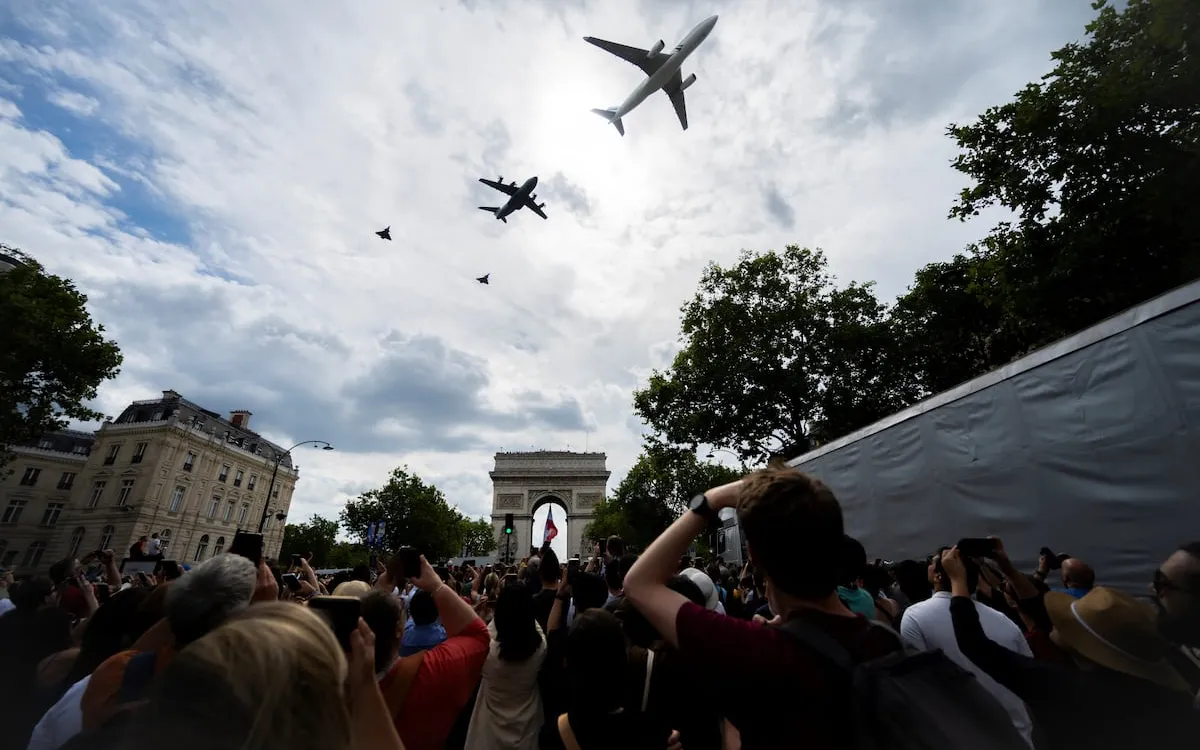
PARIS — Europe's ambition to independently build critical defense enablers to deter or defeat Russia without U.S. support could become a reality within five years, provided there's political will to invest. This assessment comes from security researchers and experts surveyed by Defense News.
Currently, European countries rely heavily on the U.S. within the NATO alliance for a range of supporting capabilities and assets that are essential for effective military operations. This dependency seems increasingly precarious as U.S. President Donald Trump has shown signs of abandoning long-time allies in favor of aligning with Russia.
Without critical enablers such as battlefield command and control (C2), satellite intelligence, and long-range strike currently provided by the United States, a potential alliance of European Union countries, the U.K., and Norway could still defeat Russia in a conventional conflict. However, the costs would be significantly higher, both financially and in terms of human lives, according to analysts.
“At a European level, we’re actually not fully operational without those enablers,” said Sven Biscop, director of the Europe in the World program at the Egmont Royal Institute for International Relations in Brussels.
Military satellite communications is one area where Europe is closest to achieving sufficient capability, with unmanned intelligence, surveillance, and reconnaissance (ISR) not far behind. Based on the assessment of 17 experts from mostly Europe-based think tanks and institutions, these capabilities could be in place or fewer than three years away.
Defense News surveyed experts on the time required for a European alliance to reach adequate capacity in nine defense enablers to deter or successfully fight Russia without U.S. support. Battlefield command and control, long-range strike, and suppression of enemy air defenses (SEAD) are areas where most analysts expect Europe to achieve self-sufficiency within five years.
Space-based ISR emerged as the capability for which respondents were least optimistic, with a majority considering Europe will need five to 10 years to stop relying on the U.S.
All these estimates depend on European governments' willingness to invest in building up these enablers. Only a few NATO members in Europe are projected to spend more than 2.5% of their GDP on defense in 2024, with nearly a third not meeting the 2% target set by NATO in 2014.
“It’s difficult to forecast the number and size of capabilities needed to be fully efficient against Russia,” said Héloïse Fayet, a researcher at the Institut Français des Relations Internationales.
Russia could potentially attack a European Union country within three to ten years, according to researchers Alex Burilkov and Guntram Wolff, citing assessments by NATO and several European nations.
European NATO allies have time to prepare, but “this time must not be spent doing nothing,” said Léo Péria-Peigné, a researcher specializing in armament capacity at IFRI.
“European solutions for enablers are critically under-financed right now, but they can ramp up, and we have time to do so,” said Péria-Peigné. “How much time will Europe need to build up capacity? If everybody is actually doing instead of talking, in five years it will be pretty solid.”
Europe wouldn’t need to match the U.S. in enablers, as its ambition is territorial defense rather than global, Biscop said. “You may not want to have the same numbers, but it is still a major investment.”
Some analysts mentioned additional enablers not included in the survey, such as combat engineering and enhanced military mobility. “Enhanced military mobility is a critical enabler to ensure deterrence,” said Mihai Sebastian Chihaia, an analyst at the European Policy Centre.
Below are the survey results on how much time a European alliance would need to reach adequate capacity in nine enablers to deter or successfully fight Russia without the U.S. The results are based on 17 responses, except for satellite communications, airborne surveillance, and strategic airlift, which received 16 responses, and SEAD with 15 responses.
Space-based ISRSpace-based ISR uses satellites to collect intelligence, conduct surveillance, and perform reconnaissance, providing critical information about enemy forces, terrain, and other factors to support decision-making and boost combat effectiveness. Europe faces challenges in expanding these capabilities.
Battlefield Command & ControlBattlefield command and control refers to the systems and processes used by military commanders to direct and coordinate forces during operations. Europe is progressing towards developing its own C2 networks.
Long-Range StrikeLong-range strike involves weapon systems that deliver conventional payload at stand-off range with high precision. Europe possesses some air-launched systems but lacks arsenal depth.
Suppression of Enemy Air Defenses (SEAD)SEAD involves actions to neutralize or degrade enemy air-defense systems, creating a safer operating environment for friendly aircraft.
Aerial Reconnaissance / Aerial ISRAerial reconnaissance uses aircraft, including unmanned aerial systems, to gather intelligence about enemy forces and terrain. Poland has developed significant unmanned ISR capability.
Satellite CommunicationsProvides secure and reliable communication links for military forces across large areas. Europe has communication satellites, but their military use is a political decision.
Airborne SurveillanceUses aircraft equipped with sensors and communication systems to enhance situational awareness. There are uncertainties regarding European access to NATO-operated AWACS aircraft.
Aerial RefuelingAllows aircraft to receive fuel in flight, extending their range and mission duration. Europe operates several Airbus A330 Multi Role Transport Tankers.
Transport Aircraft / Strategic AirliftAllows for rapid deployment of military personnel and equipment over long distances. Europe has a significant fleet of Airbus A400M heavy transport aircraft.